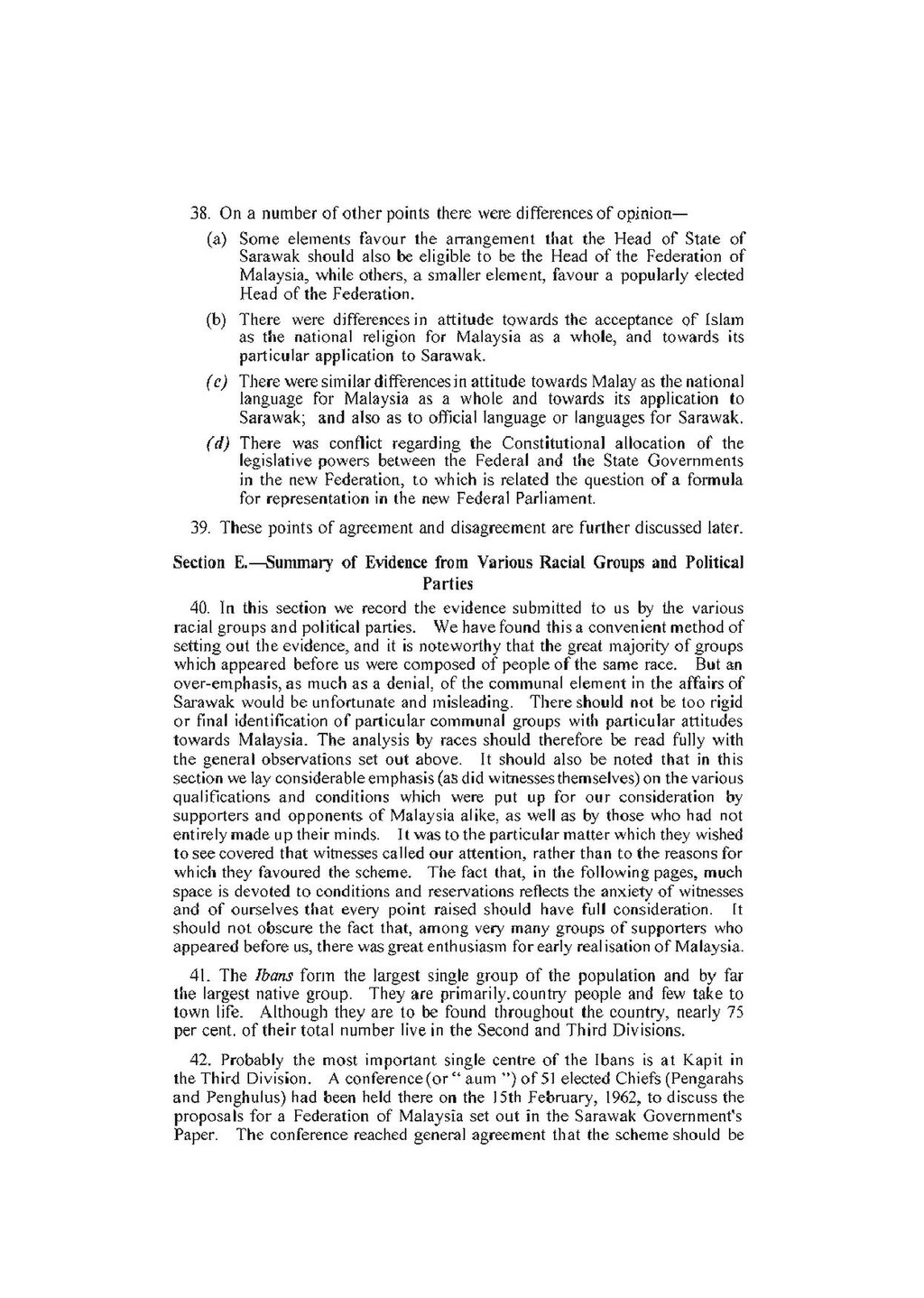38. On a number of other points there were differences of opinion—
39. These points of agreement and disagreement are further discussed later.
Section E.—Summary of Evidence from Various Racial Groups and Political Parties
40. In this section we record the evidence submitted to us by the various racial groups and political parties. We have found this a convenient method of setting out the evidence and it is noteworthy that the great majority of groups which appeared before us were composed of people of the same race. But an over—emphasis, as much as a denial, of the communal element in the affairs of Sarawak would be unfortunate and misleading. There should not be too rigid of final identification of particular communal groups with particular attitudes towards Malaysia. The analysis by races should therefore be read fully with the general observations set out above. It should also be noted that in this section we lay considerable emphasis (as did witnesses themselves) on the various qualifications and conditions which were put up for our consideration by supporters and opponents of Malaysia alike, as well as by those who had not entirely made up their minds. It was to the particular matter which they wished to see covered that witnesses called our attention, rather than to the reasons for which they favoured the scheme. The fact that, in the following pages, much space is devoted to conditions and reservations reflects the anxiety or witnesses and of ourselves that every point raised should have full consideration. It should not obscure the fact that, among very many groups of supporters who appeared before us, there was great enthusiasm for early realisation of Malaysia.
41. The Ibans form the largest single group of the population and by far the largest native group. They are primarily, country people and few take to town life. Although they are to be found throughout the country, nearly 75 per cent, of their total number live in the Second and Third Divisions.
42. Probably the most important single centre of the Ibans is at Kapit in the Third Division. A conference(or "aum") of 51 elected Chiefs (Pengarahs and Penghulus) had been held there on the 15th February, 1962, to discuss the proposals for a Federation of Malaysia set out in the Sarawak Government's Paper. The conference reached general agreement that the scheme should be
